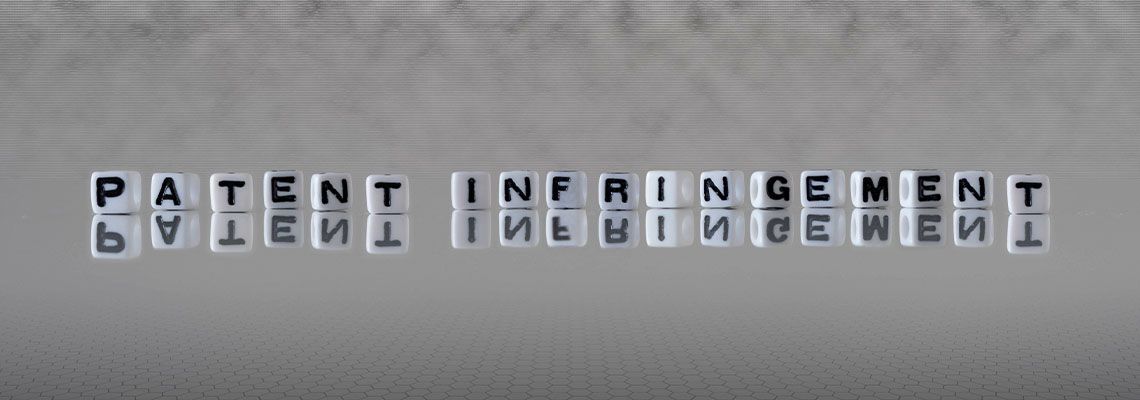
What To Do If You Suspect a Patent Pending Infringement
You’ve just designed something new and applied for a patent, now waiting for its approval. Meanwhile, during the patent-pending period – when your application has been submitted but not yet approved – you discover that someone else has just hijacked your design and is already offering the world a better option. What can you do?
When you file either a full patent application or a provisional patent application, you get to label your invention as “patent-pending.” This designation, provided you use it in your marketing and sales, offers you protection against infringement. However, there is one catch – you can’t sue the infringer until your patent has been approved and issued.
Since patent approval can take months to years, how do you protect your rights to your invention during the patent-pending period? There are practical steps you can take to put the infringer on notice or even negotiate for a future licensing deal. These steps generally go beyond do-it-yourself initiatives. You must enlist the aid of an experienced patent attorney.
If you have a patent-pending that you fear is being infringed upon near Kansas City, Missouri, contact the Ream Law Firm, L.L.C. today for legal help. Patent attorney Dale J. Ream is dedicated to helping you protect your rights over your inventions and intellectual property. With more than 25 years of experience, he can help you protect your pending patents.
The Ream Law Firm, L.L.C., champions the work of innovators in Kansas City, Missouri, and throughout the metro area, including Jackson County, Missouri, and Johnson County, Kansas.
Laws Protecting Patents Pending
A utility patent, once approved, provides the patent holder with 20 years of full ownership rights to pursue infringers in court. Before that happens, however, the holder of a patent pending is protected by The American Inventors Protection Act (AIPA) of 1999, which prohibits the copying or infringement of a pending patent.
As mentioned earlier, however, the patent applicant who holds the patent-pending rights must wait until the patent receives final approval from the U.S. Patent and Trademark Office (USPTO) before taking legal action. The best protection against infringement or copying during the pending phase is to ensure the application you submit is so detailed with specifications that you will have the legal upper hand in proving infringement.
Provisional Patent vs. Patent Application
A provisional patent is perhaps the quickest way to obtain protections against infringement. A provisional patent gives the applicant 12 months to finish the design, specifications, and application process, after which a full application can be submitted. Meanwhile, the provisional application immediately confers patent pending protection.
Looking for Infringement
Once you have patent pending status, it Is up to you to police the marketplace to discover instances where others may be copying or infringing on your idea. Of course, before you file a patent application, you are required to do a search of other patents to ensure your device, invention, or process infringes upon already existing patents. After you file with the USPTO, you can then conduct periodic patent searches to see if others are copycatting or infringing after you file.
You can also rely on marketplace research to see if your ideas or design concepts are being purloined by others. Even an online search with keywords for your patentable idea may turn up others who are piggybacking from your pending patent, or worse, outright copying it or infringing upon its patentable uniqueness.
What to Do Before You Can Sue
Even though you can’t sue until your patent is issued, you can take steps to alert the infringer of your rights. You or you and your patent attorney can engage in negotiations toward resolving the issue. Though you can’t issue a license until your patent is approved, you want to make an agreement in advance so at least you can profit from your idea while it is being misappropriated.
One step further involves sending a cease-and-desist letter to the infringer. While the infringer may just throw the letter in the filing cabinet, the letter will help substantiate your claim should matters end up in court.
Proving Infringement in Court
If you decide to bring an infringement case to court, your first challenge is to prove you own the patent and that the patent is valid.
An approved USPTO patent application should show ownership unless, you brought in other parties and diluted the issue. As for the validity, the defendant infringer can argue that your patent is not that different from previous inventions, processes, devices or that the invention is obvious and available to just about anyone. They can also argue your patent application lacked details.
The next step is to identify the infringer or infringers and prove how they infringed upon your patent. By law, there are two types of infringement: literal and the doctrine of equivalents. Literal infringement means the infringer basically made an exact copy of your patented idea. The doctrine of equivalents means the infringer used some or your patented elements or used elements that function in a similar way.
If you win, you are generally entitled to compensation for damages, which usually means payment at least in part for how much the infringer gained from your patent. If you prove the infringement was willful, you can qualify for treble damages.
Obtaining Legal Help in Protecting Your Work
Safeguarding your patent-pending or eventual patent can be a challenging task, especially if more than one entity decides to infringe. That’s why it’s always essential to rely on experienced legal advice.
If you suspect infringement near Kansas City, Missouri, contact the Ream Law Firm, L.L.C. immediately. Patent attorney Dale J. Ream is dedicated to helping you exercise your full rights in the protection of your patents and intellectual property. He proudly serves clients in Jackson County, Missouri, and Johnson County, Kansas.
